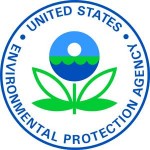Community-led Air Sensor Evaluation in North Carolina
Low-cost sensors make it possible for citizens to collect air quality data in their own communities, but they still require instruction for optimal results. While low-cost sensors can measure many of the same air pollutants that costlier regulatory monitors measure, they aren’t required to meet the same rigorous standards of accuracy and reliability. Understanding how to collocate low-cost sensors with regulatory monitors and compare their results ensures that data from the low-cost monitors are collected in a purposeful manner. EPA provided training to the citizen scientist on how to successfully collocate low cost air quality sensors with regulatory monitors and then establish the ability of the sensor to provide purposeful air quality measurements. The lessons learned from that effort provided the means to develop a series of tools useful not only to those citizen scientists but the citizen scientist community-at-large.
Geographic Scope: North Carolina
Project Status: Complete - not recruiting volunteers
Participation Tasks: Learning, Specimen/sample collection,
Start Date: 4/1/2017
Project Contact: Williams.ronald@epa.gov
Federal Government Sponsor:

Other Federal Government Sponsor:
Fields of Science: Education
Intended Outcomes: Low-cost sensors make it possible for citizens to collect air quality data in their own communities, but they still require instruction for optimal results. While low-cost sensors can measure many of the same air pollutants that costlier regulatory monitors measure, they aren’t required to meet the same rigorous standards of accuracy and reliability. Understanding how to collocate low-cost sensors with regulatory monitors and compare their results ensures that data from the low-cost monitors are collected in a purposeful manner. EPA provided training to the citizen scientist on how to successfully collocate low cost air quality sensors with regulatory monitors and then establish the ability of the sensor to provide purposeful air quality measurements. The lessons learned from that effort provided the means to develop a series of tools useful not only to those citizen scientists but the citizen scientist community-at-large.

